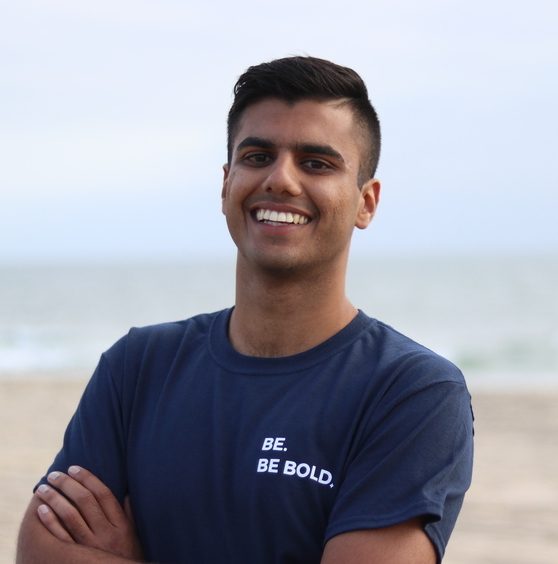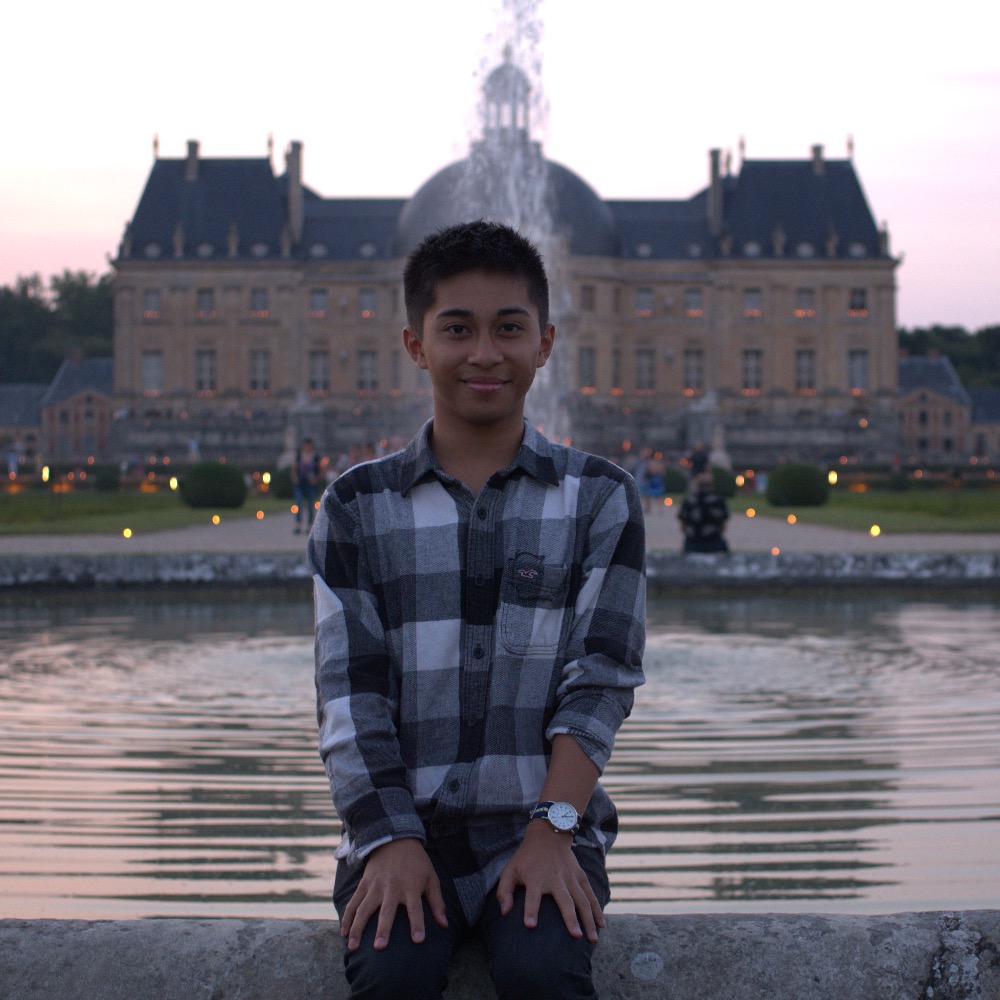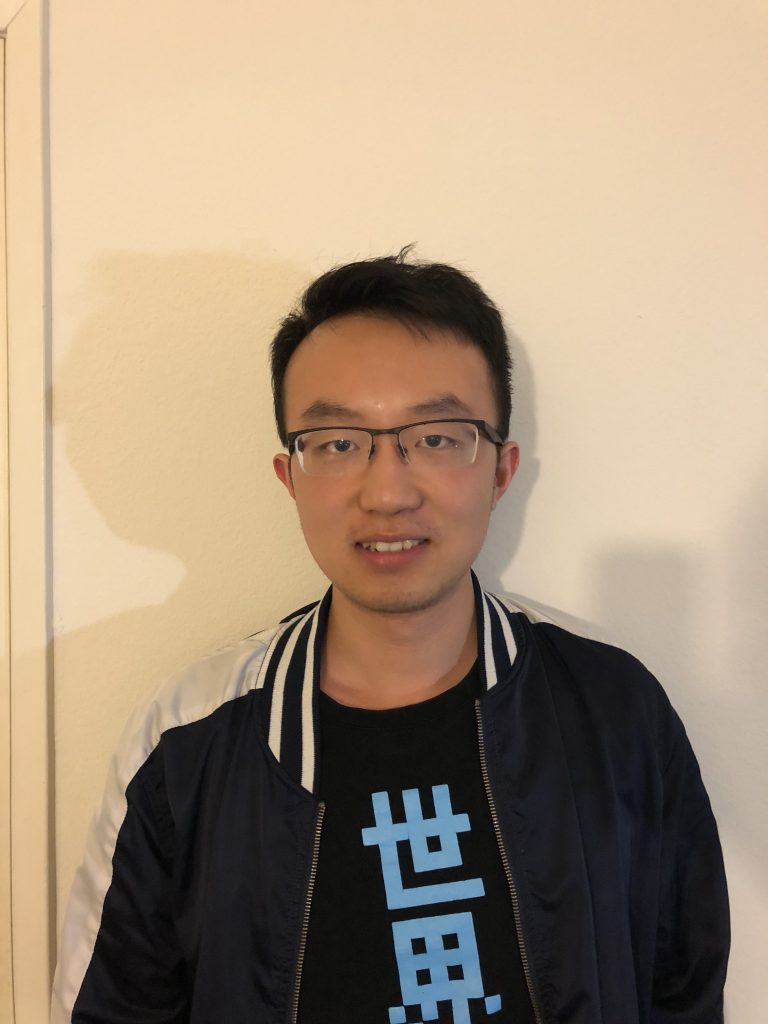
Anshul Aggarwal (2018 – 2019)
Nettd: Mapping Your Personal IRL Social Network
Mentor: Venky Harinarayan
Year: Senior
Major: Computer Science and Engineering
Digital social networks are well mapped-out, yet little has been done to map personal interactions – interactions that carry more emotional weight in an individual’s life. This project aims to create and design a living, viewable, and personal social network graph based on the quality and quantity of a user’s daily, real life interactions. We capture this data through a mobile application with GPS tracking and analyze all interactions with other users: everything from passing by on the street to spending hours talking. Using our server, we calculate the length and weight of the interaction, and update the social graph for the user to view from the app or online. Using this information, a user can better dictate how they spend their time and who they spend it with.
Results: Anshul Aggarwal’s quad chart

Miguel Gutierrez
Design & Power: How Information Architecture Reifies Information Asymmetries
Mentor: Lilian Coral
Year: Senior
Major: Art History
Donald Rumsfeld once convolutedly explained that “there are known knowns…unknown knowns…and unknown unknowns,” and in the advent of an algorithmic culture and data capture, there are perhaps more “unknown unknowns” than we as users or the outfits who employ these methodologies would like to admit. Critical algorithm studies have looked closely at what algorithms are, what they are doing, and what are their “real-world” consequences are, but the focus on a subject in the context of information architecture has been widely overlooked. The interface, as a site of a subject’s relationship to system affordances, is perhaps why there are as many “unknown knowns” and “unknown unknowns” as there are. If the interface itself was to be the locus of analysis, we will have to look critically at their design. In my project, I would first like to write a research essay that focuses will be on how information architecture itself has the power to give visibility and to silence, reinforce the information asymmetry between subjects and proprietary outfits/government actors, and limits subject agency in the context of civic participation. I would like to accompany this research-based essay with a proposal for a platform redesign that fixes the issues my essay points out. This proposal will include empirical research with stakeholders, developed personas, and wireframes that will eventually lead to a prototype.
Results: Miguel Gutierrez’ quad chart

Angelo Mendoza
Personal Budget Application for Low-Income Households
Mentor: Ninez Ponce
Year: Junior
Major: Political Science
Many low-income households do not keep a detailed budget. This is a problem since not properly tracking expenses can lead to overspending. Overspending is especially a problem in low-income households as it can lead to excessive credit card debt or the reliance on payday loans to make up the difference between paychecks. My proposed project is the creation of an affordable personal budget application that is also simple to use. Low-income households that can’t afford expensive budget applications and individuals that do not have very much spare time to spend creating detailed budgets will bnd this software useful. Creating a budget will allow households to know where exactly their income is going to and will help them manage their spending more easily. This project will be unique as many other budgeting software are expensive with some costing almost $100/year. Also, currently existing budgeting software can be difficult and time-consuming to use. The successful completion of this project will result in personal budgeting software being more accessible to low-income households and more.
Results: Angelo Mendoza’s quad chart

Liam Monninger
Twitter Finger: Tweets as Commitment Devices in Modern Diplomacy
Mentor: Sarah Roberts
Year: Junior
Major: Political Science
The era of the social media politician challenges many of the established norms of political discourse. Nowhere is this more true than in the realm of international relations, wherein the calculus of diplomatic discourse has been inundated by heads of states firing off tweets from armchairs. To understand the effects of this shift, this paper zeroes in on the medium of Twitter and seeks to gauge the viability of the tweet as a commitment device. To gauge said viability, this paper performs qualitative case by case analysis of the effects of tweets on various regimes and performs a quantitative analysis of the effects of tweets on domestic and foreign audiences. The intent of this project is to further the understanding of Twitter as an instrument of politics in the 21st century.
Results: Liam Monninger’s Quad Chart
Results: Liam Monninger’s Report

Elizabeth Nakamura
Machine Ethics and the Problematics of Deepfake
Mentor: Lauren McCarthy
Year: Senior
Major: Art History, Digital Humanities
Deepfake is a technique that employs machine learning and deep neural networks to produce realistically manipulated faceswap videos. In late 2017, Deepfake gained prominence on Reddit as a means of proliferating fake celebrity pornography. Because of the technology’s accessibility, anonymous users, using external imagery gathered from videos and images, easily superimposed the faces of Hollywood actresses onto the faces of porn stars. While Deepfake is not sophisticated enough to bridge the uncanny valley, these videos are realistic enough to raise moral concerns, forcing us to contend with our vulnerability to misinformation in today’s info-driven society. Deepfake serves as an epistemic provocation that challenges current understandings of machine ethics. Using Deepfake as a starting point, I want to point out the risks our society collectively risks if technocrats fail to establish an effective AI moral code. Furthermore, I seek to combat the perpetuation of misogynistic power structures in the digital age by addressing issues of consent, sexual objectification, and labor abuse in pornography and its impacts on human interaction. In my research I hope to address Deepfake from an interdisciplinary perspective, analyzing both its sociopolitical and technological implications.

Devin Reeh
Failure to Adopt – Big Data, Machine Learning, & IoT
Mentor: Rajit Gadh
Year: Senior
Major: Statistics, Bioinformatics
Big data, machine learning, and the internet of things have and will continue to fundamentally change how our society functions over the next twenty years. Currently, a small portion of companies have had massive integrations of such technologies, whereas a vast majority have had minor implementations or none at all. This project will investigate how the spectrum of adoption and, and more importantly, how the lack of adoption, have affected businesses and the middle class workforce in developed markets. Furthermore, “Failure to Adopt” will examine how the teachings of these instances can be applied to lagging firms and whether their technological adaptation has the momentum to prevent economic stagnation of middle class individuals.
Results: Devin Reeh’s Quad Chart

Nephele Troullinos
Agency through Virtual Sociality: Social Media in Critical Media Literacy Curricula
Mentor: Miriam Posner
Year: Senior
Major: Fine Art
This research will aim to uncover the potential of social media to create personal agency in young students, through a pointed focus on social media within a media literacy program. The question at the core of this research will be: As social media lies at the intersection of information gain and sociality, how could the intentional use of social media increase cognizance and political engagement in youth? The United States education system and its primary school students will be at the focus of this research. America’s youngest generations have now been dubbed ‘digital natives’ for their presumed digital literacy. Concurrently, widespread moral panic about the detrimental effects of technology on an impressionable population, largely from older generations of ‘digital immigrants,’ has discredited the constructive potential of a high-networked future populace. Such potential, however, may only begin to be uncovered when emerging social media studies and theory becomes integrated into primary education programs. Looking to scholarship and case studies on the intersection of digital media and education, this project hopes to propose a model social media studies program. A curriculum that guides students through the historical evolution, and societal and psychological implications of social media platforms, may allow students to unpack its informative and empowering potential.
Results: Nephele Troullinos’ Quad Chart

Adam Weiner
Identification of emerging flu strains and subsequent vaccine analysis
Mentor: Michael Silton
Year: Senior
Major: Bioengineering
Each year, the flu virus hinders the lives of millions of people across the globe. Despite the yearly release of vaccines, there are thousands of flu related deaths andmany more hospitalizations per year. If we can develop vaccines which better target emerging flu strains and have more people get vaccinated, we can reduce the dangers of flu season each year. The goal of this project is to tackle both of these issues through providing high level virus and vaccine analysis that is publicly available and interpretable. I plan on using influenza H3N2 hemagglutinin sequencing data paired with machine learning methods to identify emerging flu strains and evaluate how well each year’s vaccine protects individuals against these emerging strains. Once I have completed my analysis pipeline, I will perform critical analysis of flu vaccine from different years to track the improvement of the flu vaccine over time. Lastly, I will develop a website that continually identifies emerging flu strains and evaluates vaccines by analyzing the sequencing data as it is released, providing health officials with valuable information about circulating flu strains and shedding light on vaccine development to the general public.
Results: Adam Weiner Quad Chart

William Whitehead
Pixel-Wise Semantic Image Segmentation With Variable Pixel Density
Mentor: Jeff Burke
Year: Junior
Major: Electrical Engineering
Each pixel in an image represents a part of some object. Semantic segmentation figures out what each pixel in an image belongs to and gives it a corresponding label. Currently, the best segmentation algorithms are Fully Convolutional Networks (FCNs), a type of artificial neural network that outputs an entire image segmentation at once. While these networks often get good results, they have trouble precisely identifying smaller objects and edges. I want to investigate ways of warping images around focus pixels to help the neural network identify where the border of an object is. This idea draws inspiration from human vision, which has a much greater spatial resolution at the center than at the edges. However, the segmentation will have to be done pixel by pixel, which has a high computational cost. If this method does result in better segmentations, it could find immediate use in fields that desire precision at any computational cost, such as medical image analysis. However, its high computational requirements would prevent its use in real time applications such as autonomous cars. The results however may inspire better design of FCNs, which could find use in real time systems.
Results: William Whitehead’s Quad Chart
Results: Segmentation With Fovea-magnifying Warped Crops

Hongyi Zhang
Empowering the Newsroom: Tech for Local Journalism
Mentor: Jayathi Murthy
Year: Senior
Major: Computer Science
The local newspaper, once the bedrock of communities large and small all over America, is under siege. Declining ad revenue and an inability to adapt to a digital-first news environment has resulted in many struggling to stay afloat. While this is a multifaceted problem that does not present any easy solutions, one small part of the issue is that these newsrooms lack the resources and expertise to leverage modern technology and tools that other modern, well-funded news outlets utilize and thus harming their competitiveness. As I would subsequently explain, I believe local newspapers matter, and I want to help research and build easy to use open source tools that utilize modern technologies and machine intelligence from NLP to aid in the operation of small newsrooms, and help drive their engagement with local readers. The project seeks to understand the pain points and needs of these organizations, starting from campus newspapers, and then working to build a suite of open source micro-services that help to tackle problems from comments filtering to content management to social media management. These tools are currently expensive or entirely proprietary, and this project aims to make them available and help even the playing field.
Results: Hongyi Zhang’s Quad Chart

Pei Zhou
Fairness in Online Natural Language Processing Systems
Mentor: Amit Sahai
Year: Senior
Major: Mathematics of Computation
Online Natural Language Processing (NLP) systems like sentiment analysis, language identification, and visual tagging have been used by millions of people everyday. However, reports have found that some systems like Google’s Cloud Natural Language API and IBM’s Watson Natural Language Understanding are biased and some words like “Jew” and “homosexual” are interpreted to be negative. Researchers have also found racial disparity in language identification for tweets and gender biases for image tagging. This project will investigate different kinds of biases in NLP algorithms and propose computational models to reduce biases in various applications. Specifically, the project will first find sources of biases and quantify them in major NLP systems. Then it will improve current methods in NLP for tasks like sentiment analysis so that fairness is ensured. Possible ways of improvements are imposing constraints on the training corpora, and calibration on some certain variables including gender, race, and sexuality. This project is unique because although fairness in Machine Learning (ML) is getting more attention lately, fairness in NLP is still an issue not tackled by researchers. The project will benefit all users (especially minorities) of NLP systems on the Internet, which are almost everywhere, including Twitter, Facebook, Google, etc.
Results: Pei Zhou’s Quad Chart
Results: Pei Zhou’s Report
